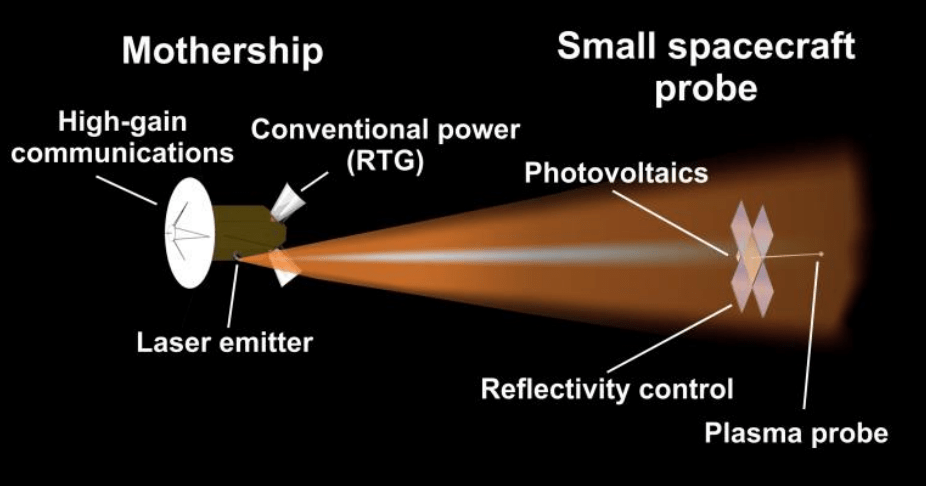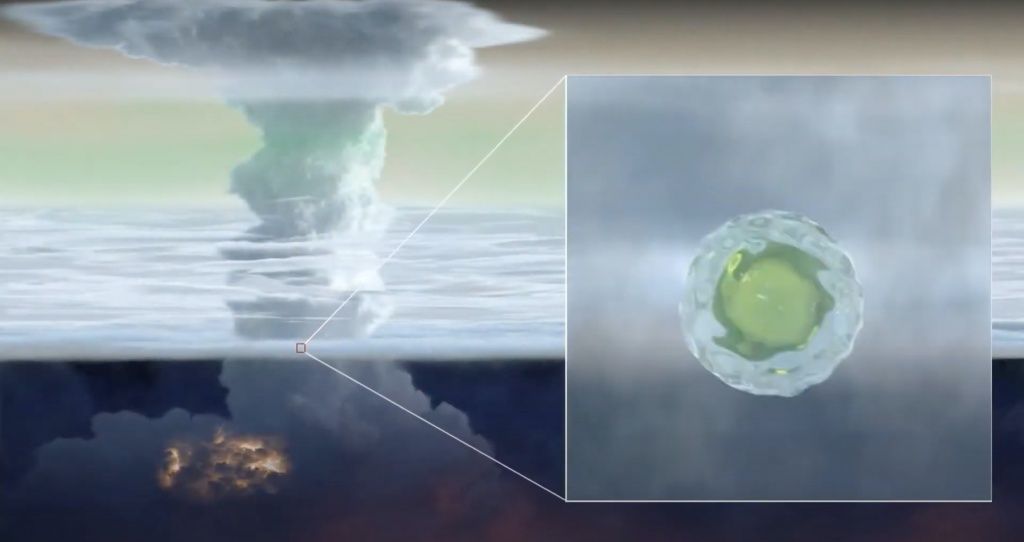Exploration missions to the outer solar system are still sorely lacking, even though they were highly prioritized in the Planetary Science Decadal Survey from 2013-2022. In fact, many planets in the outer solar system have never even been orbited by a probe. For one in particular – Uranus – we must rely on data from Voyager 2, with instruments designed over 50 years ago, or Earth-based observations. Neither solution can genuinely understand the weird physics going on with this planet that is essentially lying on its side. And while there have been plenty of proposed mission architectures to go and look at it, it’s always fun to take a look at a new one when it pops up. A team from Stanford came up with a new concept called the Sustained CubeSat Activity Through Transmitter Electromagnetic Radiation (SCATTER). It was given a NASA Institute for Advanced Concepts grant to develop the idea further. They released a paper a little while ago, and it’s worth digging into here.
Continue reading “We Could SCATTER CubeSats Around Uranus To Track How It Changes”There's a Polar Cyclone on Uranus' North Pole
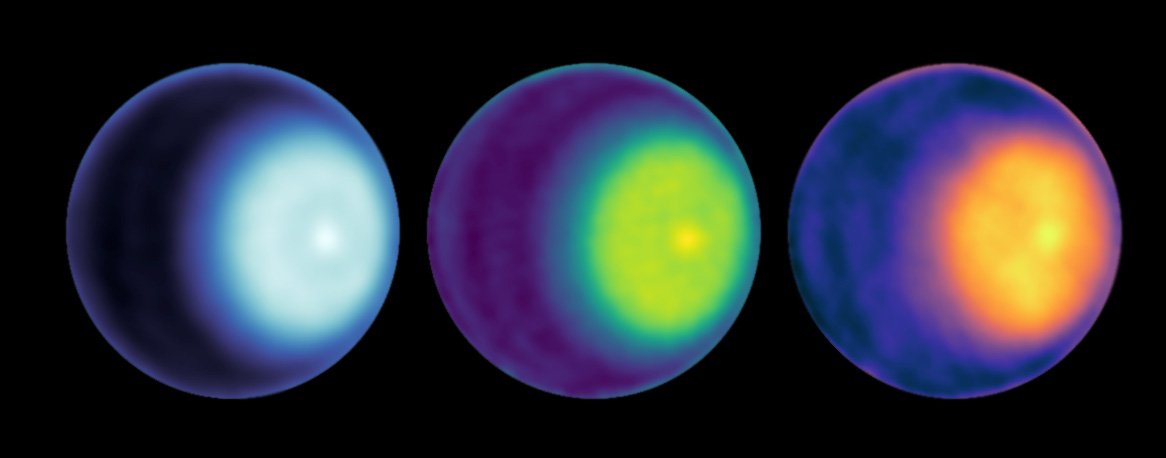
Uranus takes 84 years to orbit the Sun, and so that last time that planet’s north polar region was pointed at Earth, radio telescope technology was in its infancy.
But now, scientists have been using radio telescopes like the Very Large Array (VLA) the past few years as Uranus has slowly revealing more and more of its north pole. VLA microwave observations from 2021 and 2022 show a giant cyclone swirling around this region, with a bright, compact spot centered at Uranus’ pole. Data also reveals patterns in temperature, zonal wind speed and trace gas variations consistent with a polar cyclone.
Continue reading “There's a Polar Cyclone on Uranus' North Pole”Four of Uranus’ Moons Might Have Liquid Oceans, Too

The study of ocean worlds, planetary bodies with potential interior reservoirs of liquid water, has come to the forefront in terms of astrobiology and the search for life beyond Earth. From Jupiter’s Galilean Moons to Saturn’s Titan and Mimas to Neptune’s Triton and even Pluto, scientists are craving to better understand if these worlds truly possess interior bodies of liquid water. But what about Uranus and its more than two dozen moons? Could they harbor interior oceans, as well?
Continue reading “Four of Uranus’ Moons Might Have Liquid Oceans, Too”The Rings of Uranus Shine Bright in Stunning New JWST Image
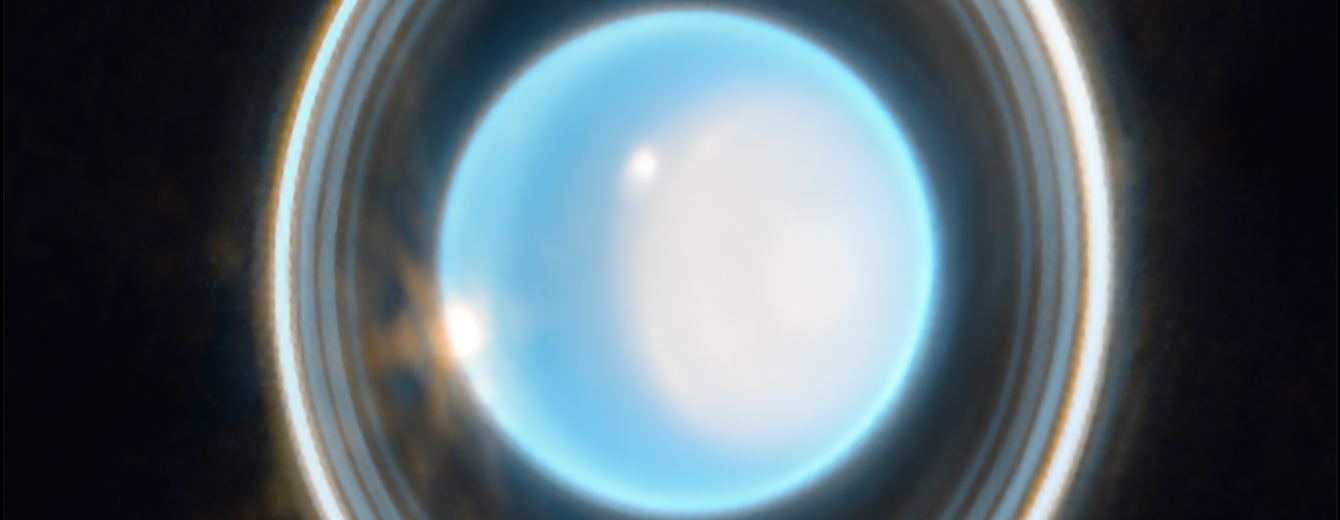
The James Webb Space Telescope has taken a stunning new image of the ice giant world Uranus. But what stands out most is the dramatic new view of the planet’s rings, which show up as never before with JWST’s infrared eyes.
Instead of being faint and wispy, the rings show up brilliantly. Additionally, bright, luminous features in the planet’s atmosphere show how an extensive storm system at the north pole of this planet getting larger and brighter.
But you’ll also want to see the full-frame image view, which also shows the six largest of Uranus’ 27 known moons. And, as we’ve become accustomed to seeing in JWST images, several distant background galaxies. Yes, every JWST image is a Deep Field!
Continue reading “The Rings of Uranus Shine Bright in Stunning New JWST Image”It's Time For Your Annual Weather Update for the Outer Solar System
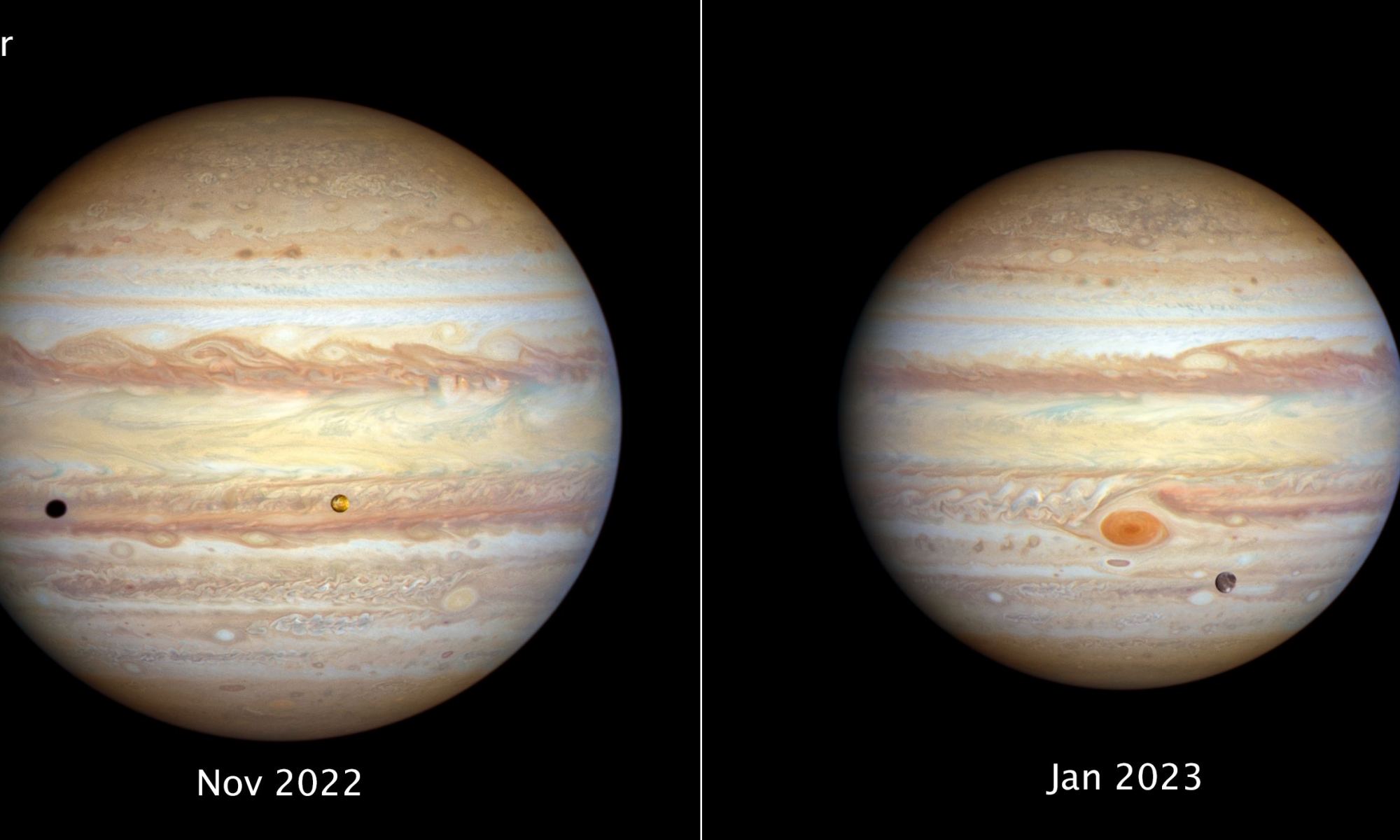
A couple times a year, the Hubble Space Telescope turns its powerful gaze on the giant planets in the outer Solar System, studying their cloudtops and weather systems. With the Outer Planet Atmospheres Legacy (OPAL) Program, Hubble provides us with these views and also delivers weather reports on what’s happening. Here’s an updated report and some new images of the stormy surfaces of Jupiter and Uranus.
Continue reading “It's Time For Your Annual Weather Update for the Outer Solar System”A Migrating Moon Might Have Turned Uranus Over on its Side
There are plenty of interesting things about Uranus. Its season lasts as long as its day, it’s the second least-dense planet, and it has a collection of 27 moons. But maybe the most puzzling fact about Uranus is that it is the only planet that lines on its side – relative to its orbital plane, at least. The most common suggestion for why the planet is tilted 98 degrees on its axis is that it was struck by a series of large impacts early in the solar system’s formation. However, new studies from a team at the Sorbonne point to a potential alternative explanation – Uranus used to have another, larger moon that pulled it onto its side and then impacted the planet itself.
Continue reading “A Migrating Moon Might Have Turned Uranus Over on its Side”Why are Uranus and Neptune Different Colors? Haze
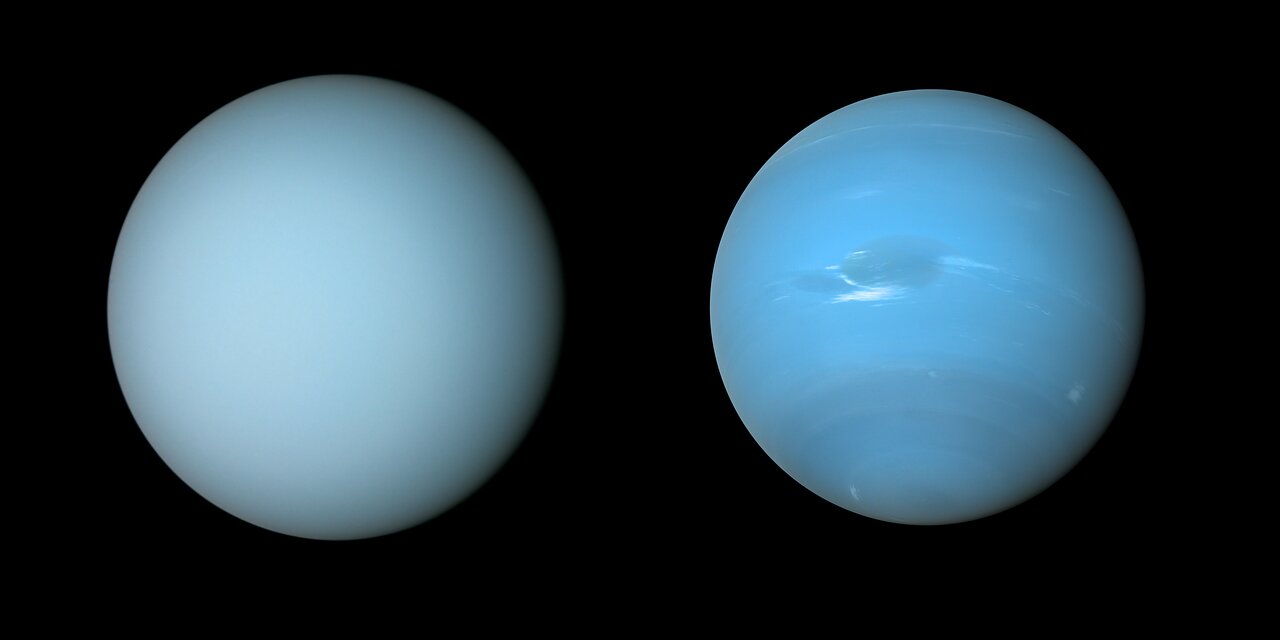
Way back in the late 1980s, the Voyager 2 spacecraft visited Uranus and Neptune. During the flybys, we got to see the first close-up views of those ice giants. Even then, planetary scientists noticed a marked color difference between the two. Yes, they both sport shades of blue. But, if you look closely at Uranus, you see a featureless pale blue planet. Neptune, on the other hand, boasts interesting clouds, dark banding, and dark spots that come and go. They’re all set against a darker blue backdrop.
So, why the difference? Planetary scientists have long suspected aerosols (droplets of gas that have liquids or dust suspended in them) in each atmosphere. But, according to a team of scientists studying the layers of the planets, the hazes those aerosols create may only be part of the story.
Continue reading “Why are Uranus and Neptune Different Colors? Haze”Giant Balls of Mush Made From Ammonia and Water Form in the Atmospheres of Uranus and Neptune
One advantage to planetary science is that insights from one planet could explain phenomena on another. We understand Venus’ greenhouse gas effect from our own experience on the Earth, and Jupiter and Saturn share some characteristics. But Jupiter also provides insight into other, farther out systems, such as Uranus and Neptune. Now, a discovery from a spacecraft orbiting Jupiter might have solved a long-standing mystery about Uranus and Neptune – where has all the ammonia gone?
Continue reading “Giant Balls of Mush Made From Ammonia and Water Form in the Atmospheres of Uranus and Neptune”What Mission Could Detect Oceans at Uranus’ Moons?
Exploration of ocean worlds has become a hot topic of late, primarily due to their role as a potential harbor for alien life. Moons that have confirmed subsurface oceans garner much of the attention, such as Enceladus and Europa. But they may not be the only ones. Uranus’ larger moons – Miranda, Ariel, and Umbriel could potentially also have subsurface oceans even farther out into the solar system. We just haven’t sent any instruments close enough to be able to check. Now a team led by Dr. Corey Cochrane at NASA’s Jet Propulsion laboratory has done some preliminary work to show that a relatively simple flyby of the Uranian system with an averagely sensitive magnetometer could provide the data needed to determine if those larger moons harbor subsurface oceans. This work is another step down the path of expanding what we think of as habitable environments in the solar system.
Continue reading “What Mission Could Detect Oceans at Uranus’ Moons?”Uranus X-Rays are Probably Reflected Sunlight, but There Could be Another Source as Well
X-rays offer a unique insight into the astronomical world. Invisible to the naked eye, most commonly they are thought of as the semi-dangerous source of medical scans. However, X-ray observatories, like the Chandra X-ray Observatory are capable of seeing astronomical features that no other telescope can. Recently scientists found some of those X-rays coming from a relatively unexpected source – Uranus.
Continue reading “Uranus X-Rays are Probably Reflected Sunlight, but There Could be Another Source as Well”
